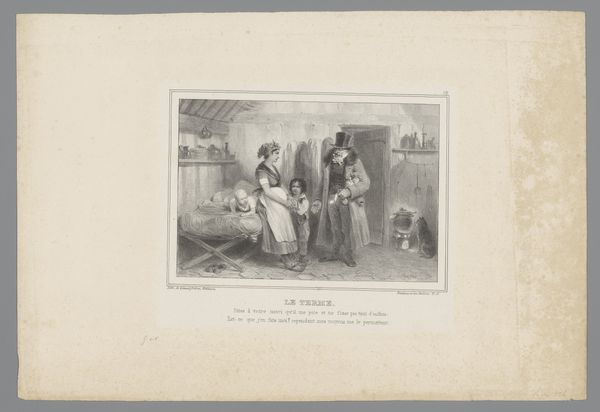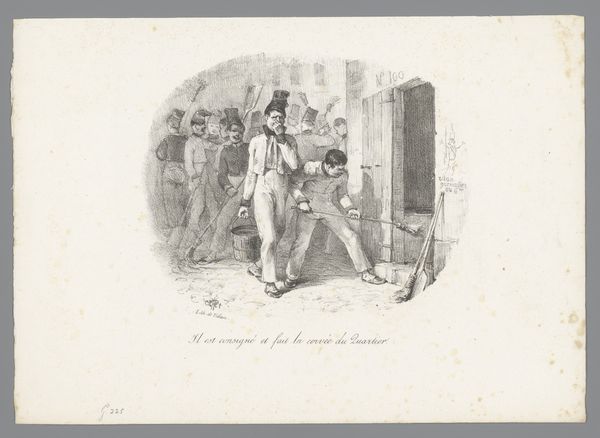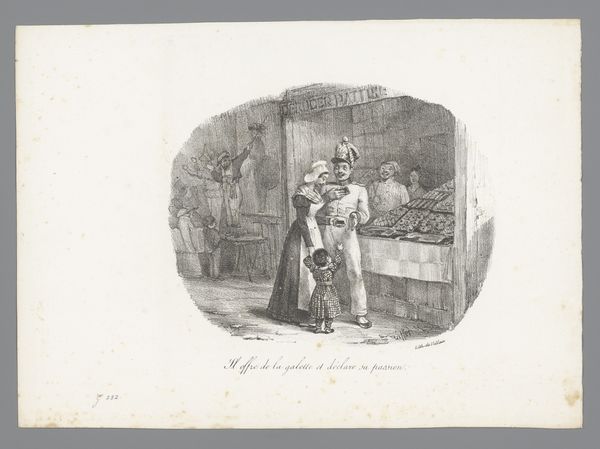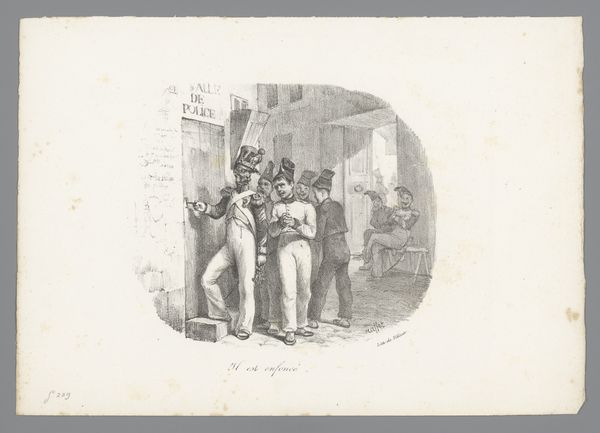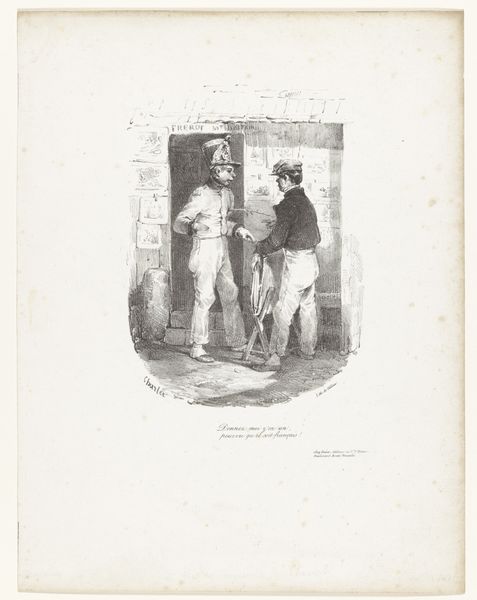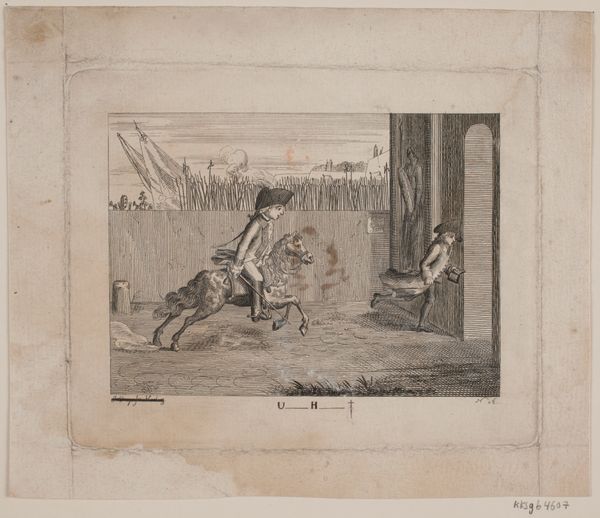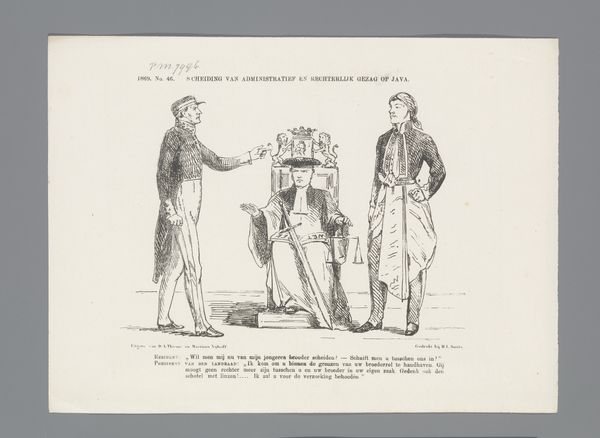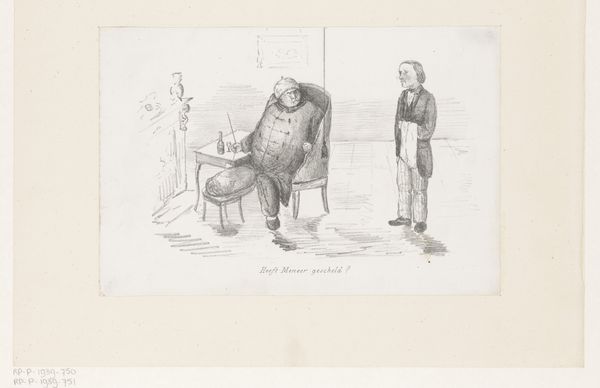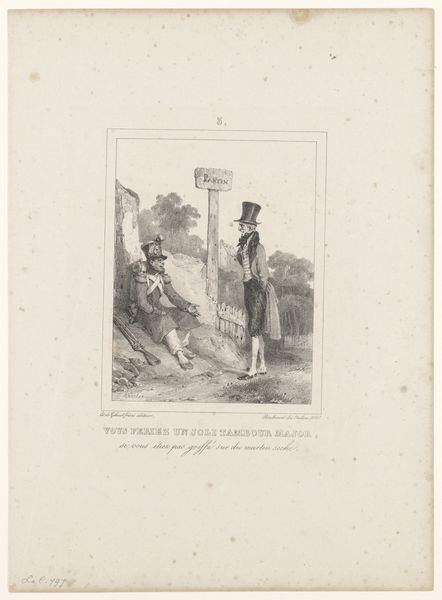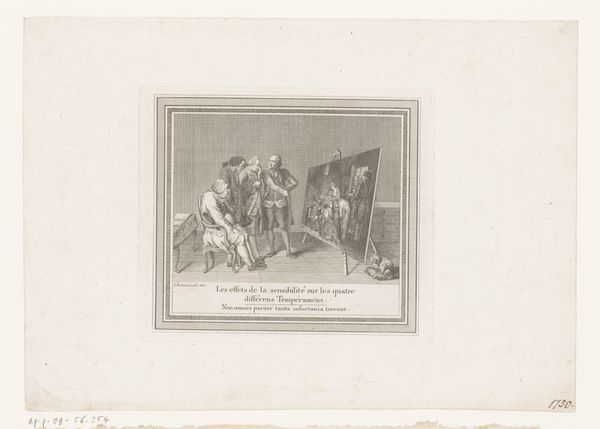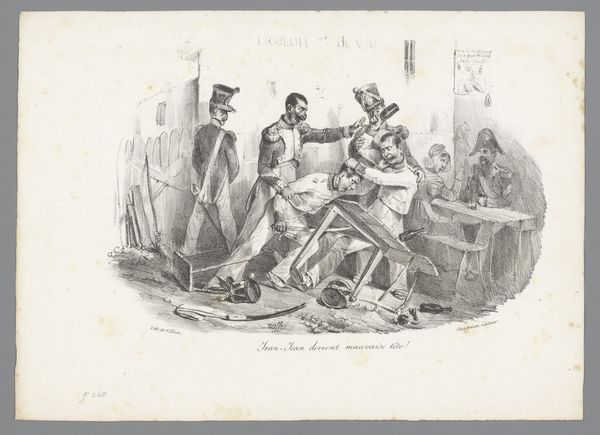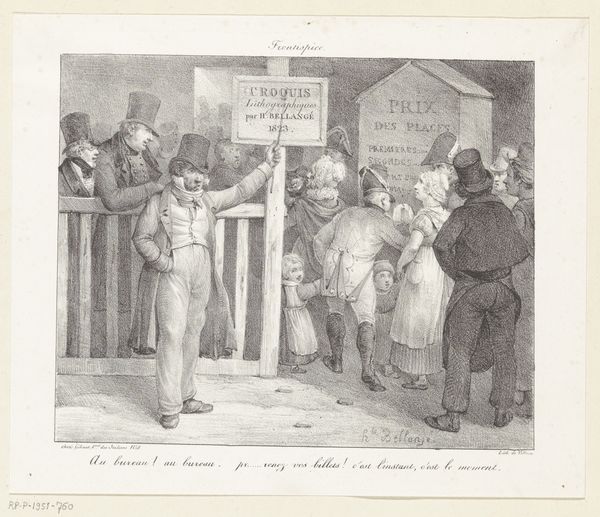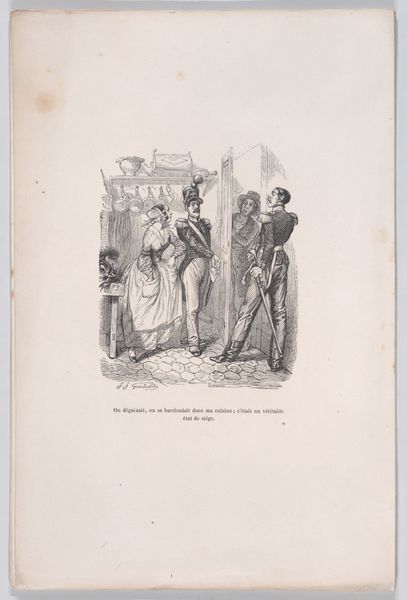
print, etching
#
narrative-art
# print
#
etching
#
figuration
#
romanticism
#
genre-painting
#
history-painting
Dimensions: height 214 mm, width 299 mm
Copyright: Rijks Museum: Open Domain
Editor: This etching by Auguste Raffet, made between 1825 and 1829, is titled "Kleermaker neemt de maten op van Jean-Jean," which translates to "Tailor taking measurements of Jean-Jean." It’s full of hustle and bustle. What exactly do you see happening here, and how does it connect to its historical context? Curator: Well, what we see is a theatrical representation, really playing on anxieties about societal shifts after the French Revolution and Napoleon's reign. The act of measuring, ostensibly for clothing, is really about measuring an individual within a changing social order. Who holds the power? Is it the figure being measured or the tailor controlling the tape? Editor: So, you’re suggesting it's not just a scene of everyday life, but a comment on social hierarchies? The almost farcical setup makes me wonder if it’s poking fun at those power dynamics? Curator: Precisely. Raffet, working during the Romantic era, was keen to depict scenes charged with emotion and political undercurrents. Consider the other figures observing, perhaps judging. Etchings like this were widely distributed, acting as social commentary consumed by a broad public. The setting, seemingly commonplace, elevates it to something of a spectacle. How do you interpret the "Jean-Jean" in the title? Editor: That’s a good question! It almost sounds like a generic name, like "John Doe" in English. Perhaps signifying an average citizen being subjected to these societal "measurements?" Curator: Exactly! And the tailor? Representing institutional powers shaping the individual. The museum's role in presenting this now shapes contemporary understanding too, right? How does its display impact the message, you think? Editor: That's a complex thought. Displaying it frames it as historically relevant, possibly muting its sharp edges but preserving its record of that social commentary. Curator: Right! So the artwork isn't static. It's message changes over time depending on its socio-political setting. Editor: Fascinating. It seems that what appears like a simple scene reveals a rather deep reflection of 19th-century society, still felt today. Curator: Agreed. It showcases the power of art as both historical document and enduring commentary on societal power structures.
Comments
No comments
Be the first to comment and join the conversation on the ultimate creative platform.
